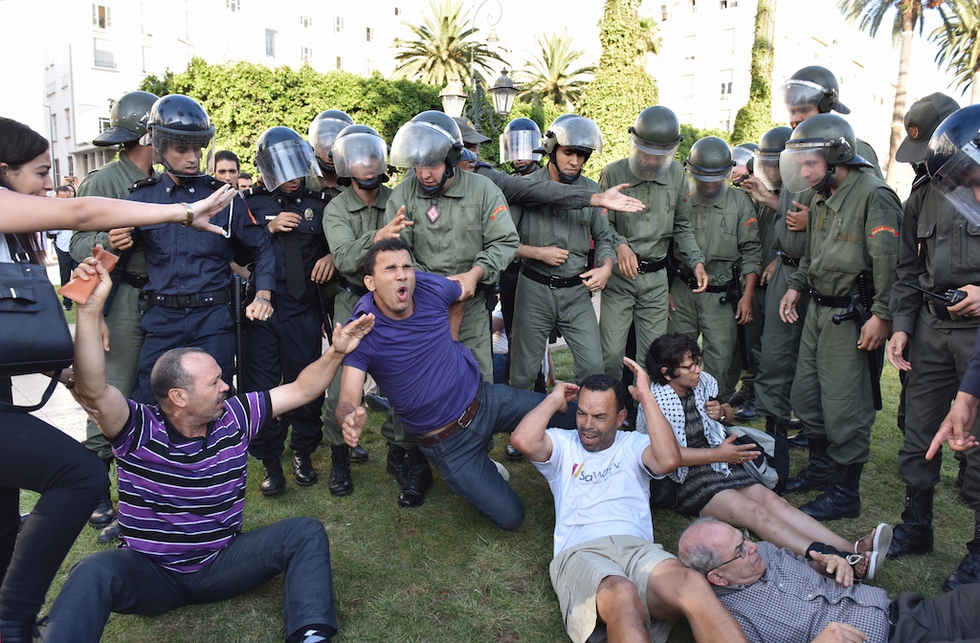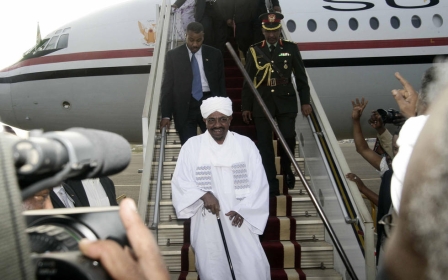Moroccan injured during protest dies after weeks in coma

A protester who fell into a coma after being wounded in protests that have shaken northern Morocco died in hospital on Tuesday, a lawyer and a judicial official said.
Imad El Attabi, a 22-year-old from the northern city of Al-Hoceima, is the first protester to die since people took to the streets in the surrounding Rif region in October over corruption, injustice and underdevelopment.
His death is likely to exacerbate the protests that have spread to other parts of the country and are the largest in Morocco since the 2011 Arab Spring.
Attabi suffered severe head injuries during protests on July 20, when clashes ensued after police fired tear gas canisters to disperse crowds.
The circumstances of his injury are contested. Authorities said Attabi was hit on the head by rocks. They later said they would investigate.
Abdessadak Elbouchattaoui, a lawyer who worked closely with Attabi's family and confirmed his death, said he was likely injured by a tear gas canister.
"His family has not been allowed to consult his medical documents that detailed the cause of his injury and his condition," Elbouchattaoui told Reuters.
Al-Hoceima's general prosecutor also confirmed Attabi's death at a military hospital in the capital Rabat, according to statement on state news agency MAP.
"We consider the state directly responsible for his death and we demand a true, credible investigation into the circumstances of his death and for justice to be served," said Youssef al-Raissouni, member of the Moroccan Human Rights Association.
The protest movement, called Hirak al-Chaabi in Arabic, began after fishmonger Mouhcine Fikri was crushed to death in Al-Hoceima when he tried to recover fish confiscated by local police from a garbage truck.
Fikri's death has become a symbol of "hogra" - a colloquial term for the deprivation of dignity due to the abuse of power and injustice.
Protests have also been fuelled by frustration at the lack of development and economic problems in the Rif, long a centre of dissent and unrest among the indigenous Berber community.
Demonstrators have primarily directed their anger at the government, though activists have also called on the monarch, who holds ultimate power in Morocco, to intervene.
On July 30, King Mohammed VI delivered his first public address since the beginning of the protests, pardoning nearly 60 Hirak members and blaming local officials stoking public anger by failing to quickly implement development projects.
On Tuesday Ilyas El-Omari, head of the pro-palace Party of Authenticity and Modernity (PAM) and president of the northern Tangiers-Tetouan-Al-Hoceima region, announced he would resign from his party position, a move linked by Moroccan media to the fallout over the protest movement.
"I acknowledge that I was being referred to in the king's speech," Omari told reporters. "I'm a person, I make mistakes, and I have to correct my wrongs."
New MEE newsletter: Jerusalem Dispatch
Sign up to get the latest insights and analysis on Israel-Palestine, alongside Turkey Unpacked and other MEE newsletters
Middle East Eye delivers independent and unrivalled coverage and analysis of the Middle East, North Africa and beyond. To learn more about republishing this content and the associated fees, please fill out this form. More about MEE can be found here.




